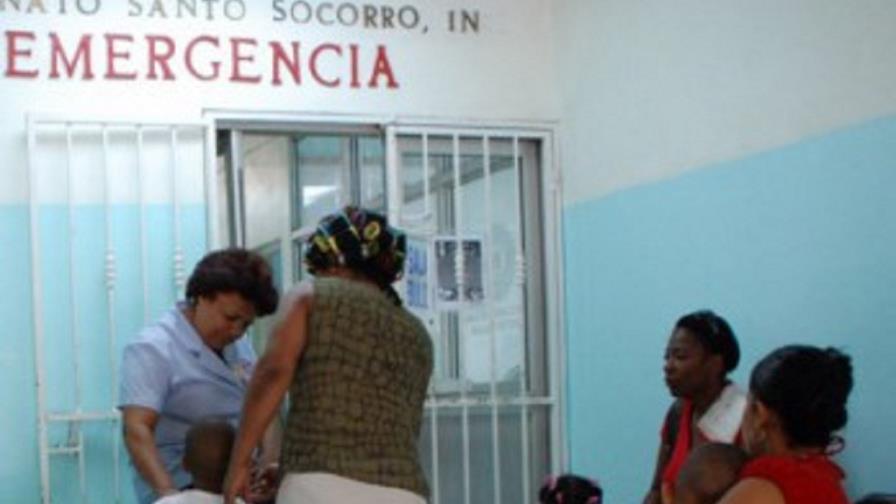The AH1N1 flu virus puts health authorities on alert

SANTO DOMINGO. The Ministry of Public Health instructed the directors of the public hospitals to watch out for cases of an influenza-type grippe that come into these facilities due to the reappearance of the AH1N1 influenza strain that affected six person last month, including the confirmed death of a pregnant woman, according to the epidemiological bulletin number 19.
Likewise, Freddy Hidalgo Nuñez called on the population to reinforce the prevention methods against influenza or the grippe, since they expect that starting in June the virus will increase its presence in the country.
According to the report from the Directorate General of Epidemiology, which covers from 5 May to 11 May, they have identified the appearance of the AH1N1 Influenza virus in four cases in Greater Santo Domingo and an equal number in San Cristobal.
Hidalgo Nuñez said that it is of vital importance to put into action the precautionary measures in the areas that favor the transmission of the infection, such as school, summer camps, companies, mass meetings, health centers, jails and other community centers.
On this idea, he recommended that persons with fevers should not go to their jobs or to public places for at least 24 hours after the symptoms have disappeared and they should not self-medicate, and they should go to the closest hospital when they have symptoms of the grippe.
"The health services are instructed to guarantee the compliance with the recommendations regarding bio-safety and the clinical handling of the cases of the grippe, placing special attention on the persons with the greatest risk, such as: pregnant women, small children, the elderly and those persons with immunodeficiency," he said.
In March 2012, the General Directorate of Epidemiology confirmed eight cases of the AH1N1 grippe out of 22 samples that were analyzed in laboratories.
The cases were from the province of San Pedro de Macoris.
The flu caused a lot of harm in the country in 2009, with a toll of more than 15 deaths and hundreds of persons affected. Internationally, the virus affected more than 60 countries and caused more than 100 deaths.
Other epidemics
The death toll from dengue fever in this country is at 31 victims so far this year.
According to the epidemiological bulletin from the Ministry of Public Health with reports up to last week, there have been 4,216 persons affected, in the majority children and 58 of them have had the hemorrhagic type.
Some 72% of the cases in the last four weeks are concentrated in Santo Domingo, Duarte, Independencia, Dajabon, El Seibo, Elias Piña, La Vega, Peravia (Bani) and Monte Plata.
In order to prevent dengue, the recommendations are to avoid stagnant water, use chlorine on water storage vessels, and keep surroundings clean, which impede the reproduction of mosquitoes.
The authorities also report 19 cases of cholera, of 985 suspected cases.
Of this number, 296 were sent to the lab and 70 cases and 7 deaths were confirmed.
Regarding leptospirosis, they said that there had been seven probable deaths from this disease.
The symptoms
The AH1N1 grippe presents symptoms of the common cold, with high fever, continual cough, and pain, sneezing, general malaise, muscular pain and a lack of appetite.
Persons with chronic diseases, children, the elderly and pregnant are the most likely victims.
Among the recommendations in order to avoid catching the disease are to constantly wash your hands and cover your mouth and nose if you cough or sneeze.
Likewise, Freddy Hidalgo Nuñez called on the population to reinforce the prevention methods against influenza or the grippe, since they expect that starting in June the virus will increase its presence in the country.
According to the report from the Directorate General of Epidemiology, which covers from 5 May to 11 May, they have identified the appearance of the AH1N1 Influenza virus in four cases in Greater Santo Domingo and an equal number in San Cristobal.
Hidalgo Nuñez said that it is of vital importance to put into action the precautionary measures in the areas that favor the transmission of the infection, such as school, summer camps, companies, mass meetings, health centers, jails and other community centers.
On this idea, he recommended that persons with fevers should not go to their jobs or to public places for at least 24 hours after the symptoms have disappeared and they should not self-medicate, and they should go to the closest hospital when they have symptoms of the grippe.
"The health services are instructed to guarantee the compliance with the recommendations regarding bio-safety and the clinical handling of the cases of the grippe, placing special attention on the persons with the greatest risk, such as: pregnant women, small children, the elderly and those persons with immunodeficiency," he said.
In March 2012, the General Directorate of Epidemiology confirmed eight cases of the AH1N1 grippe out of 22 samples that were analyzed in laboratories.
The cases were from the province of San Pedro de Macoris.
The flu caused a lot of harm in the country in 2009, with a toll of more than 15 deaths and hundreds of persons affected. Internationally, the virus affected more than 60 countries and caused more than 100 deaths.
Other epidemics
The death toll from dengue fever in this country is at 31 victims so far this year.
According to the epidemiological bulletin from the Ministry of Public Health with reports up to last week, there have been 4,216 persons affected, in the majority children and 58 of them have had the hemorrhagic type.
Some 72% of the cases in the last four weeks are concentrated in Santo Domingo, Duarte, Independencia, Dajabon, El Seibo, Elias Piña, La Vega, Peravia (Bani) and Monte Plata.
In order to prevent dengue, the recommendations are to avoid stagnant water, use chlorine on water storage vessels, and keep surroundings clean, which impede the reproduction of mosquitoes.
The authorities also report 19 cases of cholera, of 985 suspected cases.
Of this number, 296 were sent to the lab and 70 cases and 7 deaths were confirmed.
Regarding leptospirosis, they said that there had been seven probable deaths from this disease.
The symptoms
The AH1N1 grippe presents symptoms of the common cold, with high fever, continual cough, and pain, sneezing, general malaise, muscular pain and a lack of appetite.
Persons with chronic diseases, children, the elderly and pregnant are the most likely victims.
Among the recommendations in order to avoid catching the disease are to constantly wash your hands and cover your mouth and nose if you cough or sneeze.

 Diario Libre
Diario Libre
 Diario Libre
Diario Libre